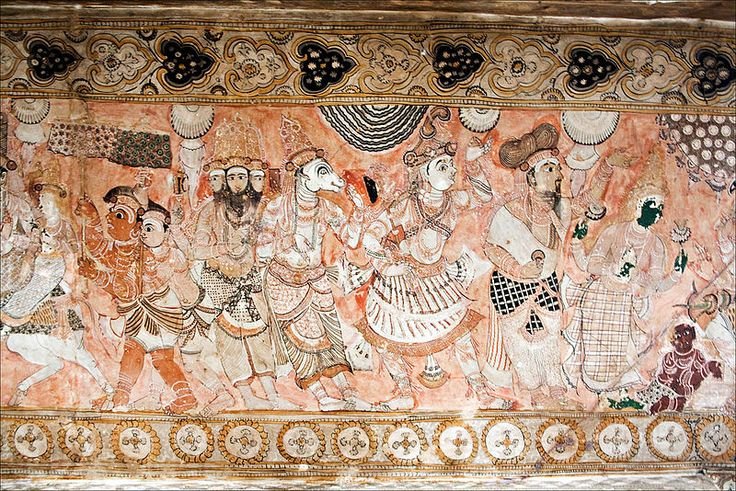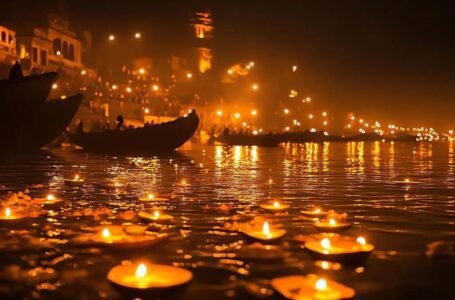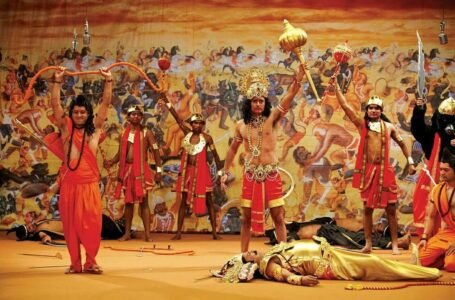Lepakshi Wall Paintings: The Vanishing Frescoes of Andhra Pradesh

Tucked away in the Anantapur district of Andhra Pradesh, the Lepakshi Temple is a stunning reminder of the grandeur of Vijayanagara architecture. Steeped in history, mythology, and artistic brilliance, this temple is home to some of India’s most exquisite surviving frescoes. These vibrant wall paintings, once a common artistic tradition, have become increasingly rare due to the passage of time, neglect, and environmental damage. The frescoes of Lepakshi are more than just paintings—they are windows into a bygone era of artistic devotion, making them one of the finest examples of South Indian mural art.
The Lepakshi Temple, also known as the Veerabhadra Temple, was built in the 16th century during the Vijayanagara Empire’s rule. It is believed to have been constructed by two brothers, Virupanna and Veeranna, who served as governors under King Achyuta Deva Raya. The temple is famous for its intricate carvings, the legendary hanging pillar that seemingly defies gravity, and, most notably, its breathtaking yet fading frescoes that cover its walls and ceilings.
Designed in the Dravidian architectural style, the temple is a significant center of Shiva worship. The complex is divided into three main sections—the Mukha Mandapa (assembly hall), the Ardha Mandapa (antechamber), and the Garbha Griha (sanctum sanctorum). While the temple’s sculptures often steal the spotlight, its mesmerizing wall paintings, rich with history and artistry, are just as remarkable and deserve greater recognition.
The Lepakshi frescoes are some of the last remaining large-scale wall paintings of the Vijayanagara period. They predominantly depict scenes from Hindu epics like the Ramayana, Mahabharata, and Puranic legends, serving both a narrative and devotional function.
The frescoes at Lepakshi bring to life a rich tapestry of mythological stories, with a strong focus on Shiva, Vishnu, and their many avatars. Among the most striking paintings are:
- Veerabhadra Swamy: One of the temple’s most awe-inspiring frescoes, this massive 23-foot-long painting on the ceiling of the Natya Mandapa (dance hall) depicts Veerabhadra, a fierce form of Shiva, following the tragic self-immolation of Sati. Veerabhadra stands tall and imposing, adorned with elaborate jewelry, surrounded by celestial beings, exuding a sense of power and divine wrath.
- The Wedding of Shiva and Parvati: This beautifully detailed fresco captures the celestial wedding, with gods, sages, and divine musicians gathered as witnesses, adding to the grandeur of the moment.
- Scenes from the Ramayana and Mahabharata: The walls also depict key moments from these epic stories, including the coronation of Rama and the great battle of Kurukshetra, painted in the grand and expressive Vijayanagara style.
Each fresco is not just a painting but a window into the devotion, artistry, and storytelling brilliance of the era.
The Lepakshi frescoes stand out for their unique Vijayanagara style, defined by:
- Vibrant Colors: Made from natural pigments sourced from minerals and organic materials, the paintings have a rich yet earthy color palette that has stood the test of time.
- Sense of Movement: Unlike the stiff, formal depictions seen in earlier mural traditions, these paintings have a natural flow—garments billow, figures gesture expressively, and scenes feel alive with energy.
- Intricate Detailing: From ornate jewelry to the delicate expressions on each face, the level of detail in these frescoes speaks to the incredible skill of Vijayanagara artists.
- Visual Hierarchy: Divine beings are often painted larger than life, while humans and lesser celestial figures appear in smaller proportions, emphasizing their place in the cosmic order.
These artistic choices not only make the frescoes visually stunning but also bring the stories they depict to life in a way that feels both grand and deeply immersive.
Despite their breathtaking beauty, the Lepakshi frescoes are slowly fading, threatened by both natural decay and human neglect. Some of the biggest challenges include:
- Humidity and Moisture: The temple’s climate and exposure to the elements have taken a toll, causing moisture damage that weakens the plaster and fades the once-vibrant pigments.
- Pollution and Wear: A steady stream of visitors, combined with a lack of proper preservation measures, has led to gradual deterioration, with dust, pollutants, and even accidental contact contributing to the loss of these priceless artworks.
Without urgent conservation efforts, these masterpieces risk being lost to time, taking with them a vital piece of India’s artistic and cultural heritage.
- Inadequate Conservation Efforts: Even though Lepakshi is a site of immense historical and artistic value, efforts to preserve its frescoes have been inconsistent and insufficient. Without proper restoration, these priceless paintings continue to fade.
- Lack of Documentation: Surprisingly, there has been little dedicated research or detailed documentation of these murals. Without proper records, much of their artistic and cultural significance could be lost forever.
Unless urgent steps are taken, these stunning frescoes risk slipping into obscurity, leaving behind only fragments of their former glory.
The Lepakshi frescoes are more than just artistic treasures—they are windows into the vibrant cultural and artistic world of the Vijayanagara era. With their intricate details, vivid colors, and rich storytelling, these murals offer a glimpse into the religious, social, and artistic life of 16th-century South India. But despite their immense historical and aesthetic value, they are slowly fading, threatened by time, nature, and neglect.
One of the biggest challenges these frescoes face is the relentless impact of time and weather. Moisture, humidity, and temperature changes have gradually worn away the pigments, causing the once-vibrant colors to fade. The plaster itself has weakened over the years, making these delicate paintings even more fragile. Without immediate restoration efforts, many of these masterpieces could be lost forever.
Human activity has also played a role in their deterioration. With a steady stream of visitors and no proper protective measures in place, the frescoes are exposed to dust, pollution, and even accidental contact, speeding up their decline. Unlike other well-preserved heritage sites, Lepakshi lacks the necessary safeguards to ensure its artwork remains intact for future generations.
Adding to the problem is the lack of dedicated conservation efforts. Despite the temple’s historical significance, restoration work has been inconsistent and underfunded. There is no large-scale initiative aimed specifically at preserving these murals, and limited research means that much of their artistic and cultural significance remains undocumented. If these frescoes continue to decay without proper documentation, we risk losing not just paintings but an important piece of history.
The need for action is urgent. Conservationists, historians, and government authorities must work together to implement protective measures—climate control systems, visitor regulations, and careful restoration projects. Digital documentation and scholarly research should also be prioritized to create detailed records of these murals before it’s too late.
Ultimately, protecting the Lepakshi frescoes isn’t just about saving art—it’s about preserving a vital connection to India’s rich cultural and spiritual past. Losing these murals would mean losing a part of our history that deserves to be cherished and passed down. With timely intervention and a committed effort, we can ensure that these breathtaking frescoes continue to inspire and educate generations to come.


